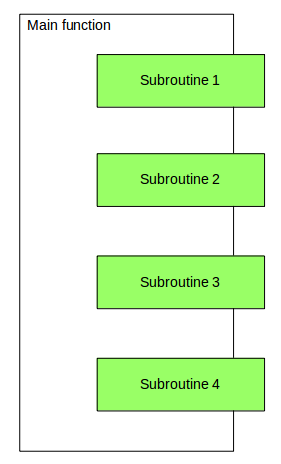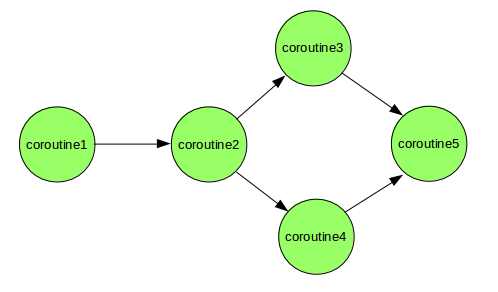Python 中的协程
函数也叫子程序,其调用过程一般为:Main中调用A,等待A结束后调用B,等待B结束后调用C… 函数的调用一般是单入口。

相比于函数,协程可以有多个入口来暂停(切换到其他协程执行)和恢复协程的执行。另外,协程的调用不像函数调用需要主函数按照特定顺序依次调用子程序,协程之间是协作关系,可以来回切换。

相比于线程,他们都是通过切换达到协作的目的。线程是由操作系统调度来实现切换,而协程是语言级别的切换,开销更小。
Python中,可以用生成器中的yield实现协程(支持不完全)
协程实现生产者/消费者模型1
import time
def consumer():
r = ''
while True:
n = yield r
if not n:
return
print('consuming {}'.format(n))
time.sleep(1)
r = '200 OK'
def produce(c):
next(c) # 启动协程,Python2写法: c.next()
n = 0
while n < 5:
n = n + 1
print('producing: {}'.format(n))
r = c.send(n)
print('consumer return: {}'.format(r))
c.close() # 关闭协程
c = consumer()
produce(c)
运行结果:
producing: 1
consuming 1
consumer return: 200 OK
producing: 2
consuming 2
consumer return: 200 OK
producing: 3
consuming 3
consumer return: 200 OK
producing: 4
consuming 4
consumer return: 200 OK
producing: 5
consuming 5
consumer return: 200 OK
用连接协程的方式创建管道2

def producer(sentence, next_coroutine):
tokens = sentence.split(' ')
for token in tokens:
next_coroutine.send(token)
next_coroutine.close()
def pattern_filter(pattern='ing', next_coroutine=None):
print("Searching for {}".format(pattern))
try:
while True:
token = (yield)
if pattern in token:
next_coroutine.send(token)
except GeneratorExit:
print("Done with filtering!!")
def print_token():
print("I'm sink, i'll print tokens")
try:
while True:
token = (yield)
print(token)
except GeneratorExit:
print("Done with printing!")
pt = print_token()
next(pt)
pf = pattern_filter(next_coroutine=pt)
next(pf)
sentence = "Bob is running behind a fast moving car"
producer(sentence, pf)
运行结果:
I'm sink, i'll print tokens
Searching for ing
running
moving
Done with filtering!!
Done with printing!